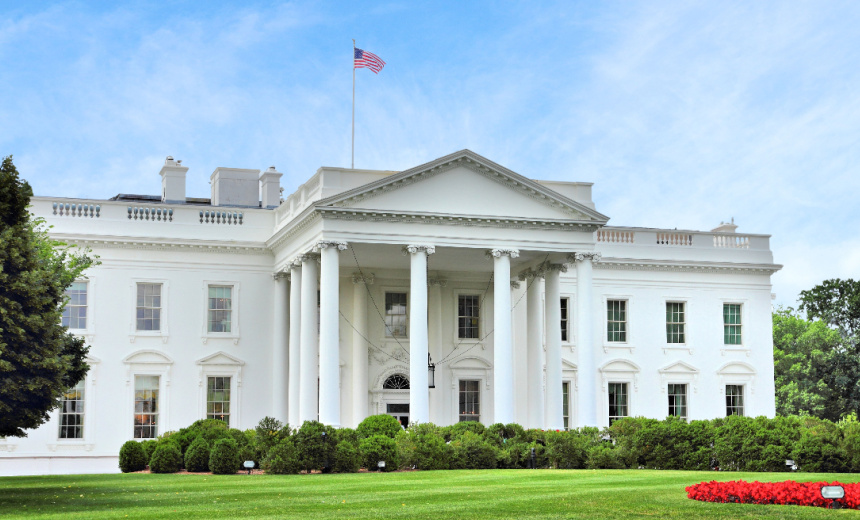Artificial Intelligence & Machine Learning
,
Next-Generation Technologies & Secure Development
,
Standards, Regulations & Compliance
White House Officials Worry That China Can Leap From U.S. Capabilities

The Biden administration declared artificial intelligence suitable for national security purposes in a Thursday directive providing guidance for AI governance and risk management for use in classified missions.
See Also: OnDemand | Fireside Chat: Staying Secure and Compliant Alongside AI Innovation
The White House said President Joe Biden signed Thursday a national security memorandum laying out a framework for risk management, evaluation, accountability and transparency across the government.
“If we don’t deploy AI more quickly and more comprehensively to strengthen our national security, we risk squandering our hard-earned lead,” National Security Advisor Jake Sullivan said during a speech at the National Defense University. The framework emphasizes “our nation’s core values,” he said, including AI free from bias and implemented with human oversight.
The memorandum and AI policy push by the White House has one eye planted firmly on China, with Sullivan fretting that the communist country is on a path to outspend the United States on research and development.
Not ushering artificial intelligence into national security puts the United States “at risk of a strategic surprise by our rivals, such as China,” a senior administration official told reporters Wednesday evening. “Countries like China recognize similar opportunities to modernize and revolutionize their own military and intelligence capabilities using artificial intelligence,” making it imperative for the U.S. defense sector to adopt “cutting-edge AI capabilities to maintain our competitive edge.”
Clear applications of the technology include cybersecurity and counter-intelligence, “not to mention the broad array of logistics and other activities that support military operations,” the senior official said.
Sullivan, in his speech, acknowledged there are differing perspectives on the potential of AI, with some holding that we are on the precipice of a civilization-altering technology, while others believe that the current iteration of AI capabilities will plateau (see: Will AI Hallucinations Get Worse?).
“The size of the question mark distinguishes AI from many other technological challenges our government has had to face,” Sullivan said.
The senior administration official, when asked about the potential for AI tools to misdirect national security through hallucinations, said the federal government is aware of the risks. “We have pilots and some important experimentation happening because there are going to be challenges associated with adopting any new technology,” the official said.
The national security memorandum formally designates the AI Safety Institute within the National Institute of Standards and Technology as the government liaison with the AI industry and seeks to make it easier for the institute to partner with national security agencies.
It also tasks the intelligence community with collecting data on global competitors espionage against the AI industry and directs federal information sharing of cybersecurity and counterintelligence information with private sector developers. It also tasks the government with improving the security of the semiconductor supply chain.
“This is our nation’s first-ever strategy for harnessing the power and managing the risk of AI to advance our national security,” Sullivan said.
The intelligence community previously pledged in July 2020 to follow an ethics framework for AI use that “respects human dignity, rights and freedoms.”
Transparency promises from the federal government can provoke skepticism, including from a raft of civil society organizations who in July objected that “despite pledges of transparency, little is known about the AI being deployed by the country’s largest intelligence, homeland security and law enforcement entities.” Signatories of the Center for Democracy and Technology-led letter called for clear governance and heightened oversight.
The Biden administration has sought to construct a raft of guidelines and framework for AI with its touchstone document an October 2023 executive order (see: White House Issues Sweeping Executive Order to Secure AI). Vice President Kamala Harris has played a key role in White House AI efforts, a likely indicator of policy continuity across administrations if she succeeds Biden in the upcoming U.S. presidential election. In a November speech, she highlighted “the urgency of this moment” to “lay the groundwork for the future of AI.”
The platform of Republican presidential candidate Donald Trump calls for revoking the Biden AI executive order, stating that a GOP White House would “support AI development rooted in free speech and human flourishing. A coalition of more than 60 artificial intelligence industry players including Google, Meta, OpenAI and Anthropic on Wednesday urged Congress to embed into statute the AI Safety Institute before the next legislative session starts on Jan. 3.
